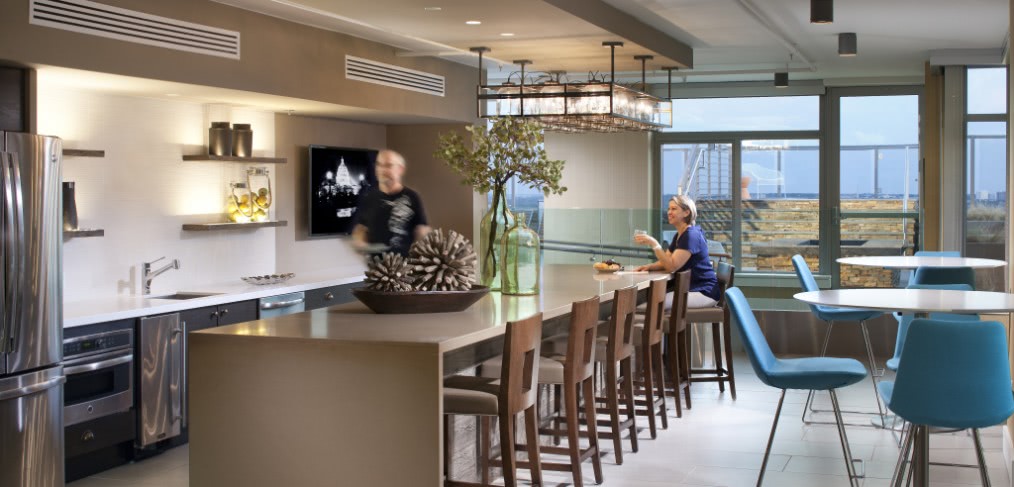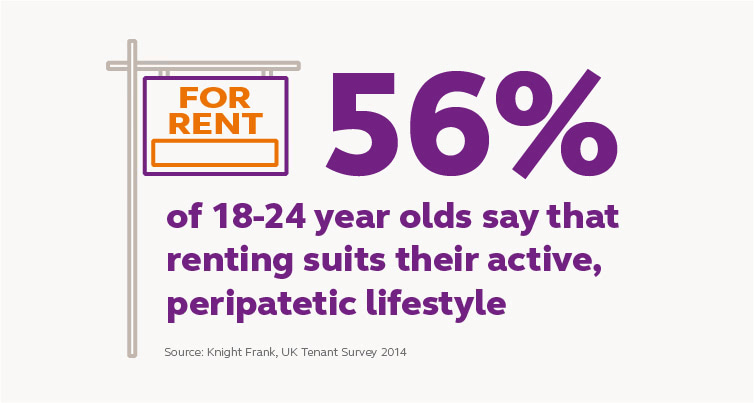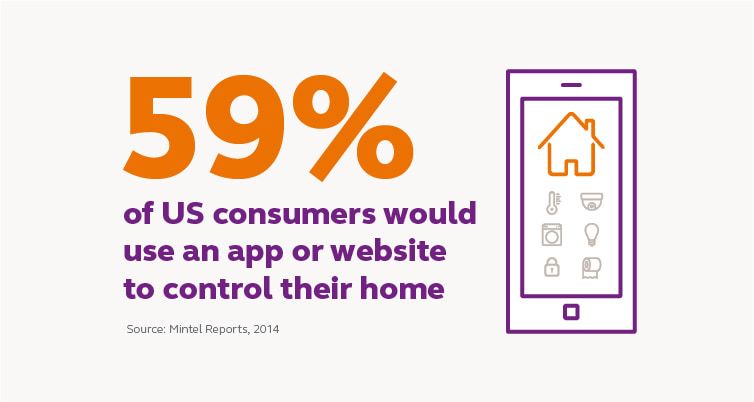
DATÜM: Enviable Apartment Amenities
There’s no place like home. In celebration of National Apartment Housing Day, here’s some background on what’s driving the latest apartment amenities on the market.
INFLUENCE
The apartment industry continues to thrive and more renters are renewing their leases rather than moving. Whether renting by choice or out of necessity, young, professional status seekers and thriving urban baby boomers alike seek more than just a place to live; they want a home. A place that not only aligns with their lifestyles, but helps make life more convenient. Renters also crave a sense of community outside their immediate networks and a place where they can learn, engage and prosper. Popular co-working space, WeWork, estimates that their co-living, community-oriented equivalent, WeLive, will provide the company with 21% of its revenue by 2018. Consider the data:
- 69% of baby boomers who rent expect to continue renting over the next three years; 37% don’t want the responsibilities of owning a home [source: FreddieMac, 2016]
- 50% of consumers are interested in remote monitoring, meaning they want to switch off their coffee maker and turn on the heat at home from the comfort of their offices [source: Ericsson ConsumerLab, 2014]
- 42% of people feel under constant pressure to get things done and 66% are looking for ways to simplify their lives [source: Euromonitor, 2015]

INSPIRE
Meeting the amenity needs of renters spanning multiple generations and supporting a flexible, urban lifestyle is a challenge. Developers and operators are taking aim at reinventing the multifamily landscape in innovative ways to better meet the needs of their tenants.
1. Hidden Pet Amenities
62% of Americans have at least one pet in their household, so it’s easy to see how consumers spent $19.7 billion on pet care last year alone. Pets are often considered full-fledged members of the family and designers are coming up with unique ways to highlight—but also hide—our furry friends’ everyday necessities. Pull-out pet stations, hidden food storage, built-in-beds and rooftop dog parks have become staples in some markets.
2. A Smarter Apartment
IOTAS partners directly with property developers to equip apartments with a connected network of smart outlets, switches and sensors before residents move in. As energy costs decrease and applications increase, so grows the demand, especially among the younger generation who believe in the concept of the Internet of Things.
3. Live Anywhere and Nowhere
Speaking of networks, in response to the changing face of the UK’s exploding rental sector, Gridizen, an exciting new residential rental concept for London, has designed fitness areas and lounges accessible for anyone across their network of residential developments. If you’re a part of the Gridizen community, you can work out or hang with friends at a location that’s closest to you—not just the building in which you reside.
INVENT
The competition is intense, but a residential property can differentiate itself by way of a carefully curated amenity offering for residents and the extended community. Here are three helpful hints:
1. Lead with Tech
Smart home technology has primarily stayed exclusively within condo walls. Today’s renters crave flexibility and adaptability and want to avoid the strict rules around installing permanent fixtures. Instant connectivity, beyond free WiFi, is mandatory for today’s properties.

2. Transparency and Authenticity
When it comes to amenities, it’s about quality over quantity. An advertised “pet spa and dog run” can’t just be a sink in the basement and a strip of grass adjacent to the sidewalk. A high-tech home service has to do more than facilitate automatic payments and an online community for residents. Your tenants are smarter than that, and they have the ability to leave very candid online reviews. Avoid stale and expected amenities.
3. Activate the Lobby and Public Spaces
With space at a premium and social amenities at their most desirable, hospitality and residential design are colliding to shape a more welcoming environment capable of facilitating higher levels of interaction among neighbors. No longer are residents rushing home from the office and spending the rest of their evening holed up in their micro-units; instead, they are spending their time in spaces designed specifically for their lifestyles where they can socialize, work or have a nightcap before heading to bed.
